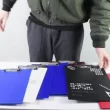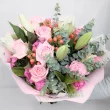Introduction
Few textiles in the world evoke as much intrigue and heritage as indigo fabric. Known as the “blue gold” of ancient civilizations, indigo has been a symbol of wealth, spirituality, and craftsmanship for thousands of years. From the lush fields of India and West Africa to the trading ports of Europe and Asia, this natural dye has traveled across continents, leaving a mark not only on fabric but also on culture, economy, and fashion. Today, as sustainable textiles regain importance, indigo fabric continues to enchant designers and consumers with its timeless appeal.
The Ancient Roots of Indigo Dye
The history of indigo dye stretches back over 5,000 years, with evidence of its use found in ancient Egypt, Mesopotamia, India, and Peru. In Egypt, indigo-dyed linen was discovered in the tombs of pharaohs, symbolizing prestige and ritual purity. In India, indigo was cultivated extensively, becoming one of the earliest centers of dyeing and trade.
Unlike other plant-based dyes, indigo possesses a unique chemical process—it does not directly impart color but instead undergoes a transformation when exposed to air. When fabric is dipped into the dye vat, it emerges green, only to oxidize into the deep, rich blue that defines indigo. This mystery and magic surrounding the dye contributed to its sacred and exotic reputation throughout history.
Indigo in India: The Cradle of the Blue Dye
India has long been at the heart of indigo cultivation. Known locally as “neel”, the indigofera tinctoria plant thrived in the fertile soils of Bengal, Gujarat, and the Deccan Plateau. By the 16th and 17th centuries, India had become the largest producer of indigo dye, exporting it to Europe through the East India Company.
The dye’s profitability led to the infamous Indigo Revolt of 1859–60, when Indian farmers rose against oppressive plantation systems imposed by the British. This historical event not only highlighted indigo’s economic significance but also cemented its place as a symbol of resistance and identity.
The Science of Indigo: How the Dye Works
Unlike most dyes that bind directly to fibers, indigo is a vat dye. This means it must be reduced to a soluble form before being applied. The process typically involves:
- Fermentation or chemical reduction to make the dye water-soluble.
- Immersion of fabric the textile absorbs the reduced dye.
- Oxidation in air the green fabric turns blue as the indigo molecule reverts to its insoluble state.
This meticulous process ensures that indigo fabrics gain a durable, rich hue that resists fading, making it ideal for workwear, traditional attire, and now, luxury fashion.
Indigo Across Cultures: A Global Legacy
Indigo traveled far beyond India, shaping cultures around the world:
- West Africa: The Yoruba of Nigeria and the Tuareg of the Sahara are renowned for their intricate indigo-dyed textiles, often symbolizing social status and spiritual protection.
- Japan: Known as aizome, Japanese indigo dyeing became an art form, producing textiles with exquisite geometric and floral patterns. Samurai wore indigo-dyed cloth for its believed antibacterial properties.
- Europe: Indigo revolutionized textile industries, replacing woad (a less vibrant blue dye) and fueling global trade networks. It became a highly prized commodity, rivaling gold and spices.
Indigo and the Birth of Denim
Perhaps the most enduring association of indigo is with denim fabric. In the late 19th century, indigo was chosen to dye denim workwear because of its strength and ability to mask dirt. The creation of blue jeans by Levi Strauss and Jacob Davis transformed indigo into a modern icon.
Today, denim remains the most widely recognized indigo fabric, worn by millions across the globe. From rugged workwear to high fashion runways, indigo-dyed denim has become a symbol of rebellion, youth culture, and timeless style.
The Renaissance of Natural Indigo in Sustainable Fashion
In recent decades, synthetic indigo has dominated the textile industry, replacing traditional plant-based methods. However, the growing emphasis on eco-friendly and sustainable fashion has revived interest in natural indigo dyeing.
Natural indigo is valued for being:
- Biodegradable and non-toxic
- Ethically produced through artisan communities
- Rich in unique shades not replicable with synthetics
Designers around the world are collaborating with traditional indigo artisans to create handcrafted fabrics that blend heritage with modern aesthetics. This movement not only preserves ancestral knowledge but also supports sustainable livelihoods.
The Symbolism of Indigo: Beyond Fabric
Indigo has always carried deep cultural and spiritual significance. In many traditions, it is associated with the third eye chakra, representing intuition and higher consciousness. In West Africa, indigo garments often marked rites of passage, while in India, it symbolized both prosperity and protest.
The color blue, derived from indigo, became a universal emblem of calm, strength, and infinity—qualities that continue to inspire designers, artists, and spiritual seekers today.
How Indigo Fabric Inspires Modern Design
From runway couture to interior design, indigo fabric continues to captivate with its versatility. Modern applications include:
- Bohemian-style home décor: indigo-dyed cushions, rugs, and wall hangings.
- Contemporary fashion: dresses, jackets, and scarves infused with hand-dyed patterns.
- Luxury accessories: indigo leather goods and artisanal handbags.
- Artisanal textiles: hand block printing and tie-dye techniques combined with indigo for one-of-a-kind creations.
The fusion of indigo with modern trends ensures that this ancient fabric remains relevant in today’s design landscape.
Read more also world wide digest.
Indigo in Culture and History
Indigo fabric has been part of many cultures around the world:
1. India
India was once the world’s largest producer of indigo dye. For centuries, it was a major export to Europe and other parts of Asia. In ancient India, indigo-dyed fabrics were worn by royalty and were a sign of status and power.
2. Africa
In countries like Nigeria, Mali, and Ghana, indigo was used in traditional fabric making. African women, especially, were known for their skills in dyeing cloth using indigo and creating beautiful patterns through a method called resist dyeing.
3. Japan
In Japan, indigo dyeing is called “aizome.” It has been used for centuries to dye kimonos, work clothes, and samurai uniforms. Japanese artisans created many patterns and styles using indigo fabric.
4. Europe
By the 17th century, indigo became a prized product in Europe. It replaced a similar dye called woad, which was used in Europe before indigo became widely available. The rich blue from indigo was more vibrant and long-lasting.
Indigo and Colonialism
Indigo’s popularity also brought challenges. During the colonial period, indigo became a cash crop. In places like India, the Caribbean, and the American South, colonial powers forced farmers and workers to grow indigo under harsh and unfair conditions.
In India, this led to a major protest called the Indigo Rebellion in 1859, where farmers refused to grow indigo for British colonists. The rebellion became an important part of India’s fight for independence and showed how something as simple as a dye could have a deep impact on history.
Indigo in Modern Fashion
Today, indigo fabric is more popular than ever. You see it in jeans, jackets, shirts, and even home decor items like pillows and curtains. Designers love indigo for its deep, natural look and its ability to fade beautifully over time.
Indigo dye is also a key part of slow fashion and handmade clothing. Many modern brands now use natural indigo instead of chemical dyes because it’s safer for people and the environment.
Artisans around the world still make indigo fabric using traditional methods. These hand-dyed items are valued for their quality, beauty, and story.
Why Indigo Fabric Is So Loved
There are many reasons why people around the world still love indigo fabric:
- It’s natural: The deep blue color comes from plants.
- It tells a story: Each piece of fabric holds history and tradition.
- It’s unique: No two hand-dyed fabrics are the same.
- It ages well: Indigo fades in a beautiful way, adding character to your clothes.
- It’s timeless: Indigo has stayed stylish across cultures and generations.
Caring for Indigo Fabric
Because indigo fabric can fade over time, here are a few tips to help keep it looking great:
- Wash it separately, especially the first few times.
- Use cold water to help the color last longer.
- Avoid harsh soaps or bleach.
- Air dry instead of using a hot dryer.
Taking good care of your indigo-dyed clothes helps them last longer and keeps the color rich and beautiful.
The Future of Indigo Fabric
The journey of indigo from ancient dye vats to global fashion capitals is nothing short of extraordinary. As consumers increasingly seek sustainability, authenticity, and cultural heritage, indigo fabric stands as a beacon of tradition and innovation. Its iconic blue hue continues to inspire creativity while reminding us of the deep connections between fabric, culture, and history.
Indigo fabric is not just cloth dyed blue—it is a story woven in every thread, a narrative of resilience, artistry, and timeless elegance.
Conclusion
Walking into a smoke shop for the first time can feel like entering a new world. But once you understand the basics, it becomes an exciting place full of possibilities. This guide introduced you to the most important smoke shop essentials, including pipes, papers, grinders, vapes, and more.
By starting simple, asking questions, and choosing the right tools, you’ll enjoy your smoking journey from the beginning. Don’t rush—take your time to explore, learn, and find what works best for you.
Whether you’re here for relaxation, fun, or curiosity, smoke shop essentials can make the experience smoother and more enjoyable. The more you learn, the better your sessions will be.












